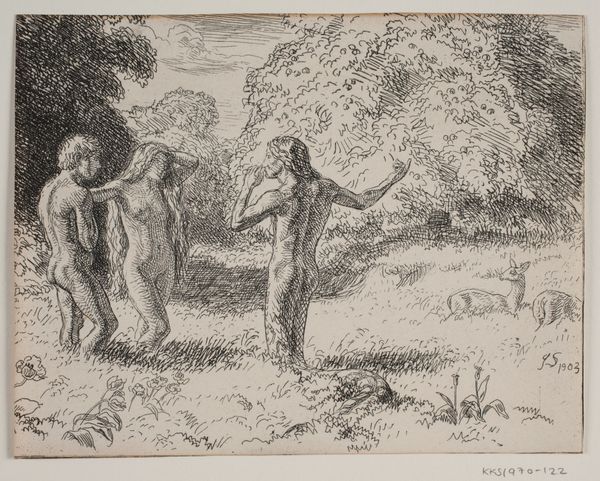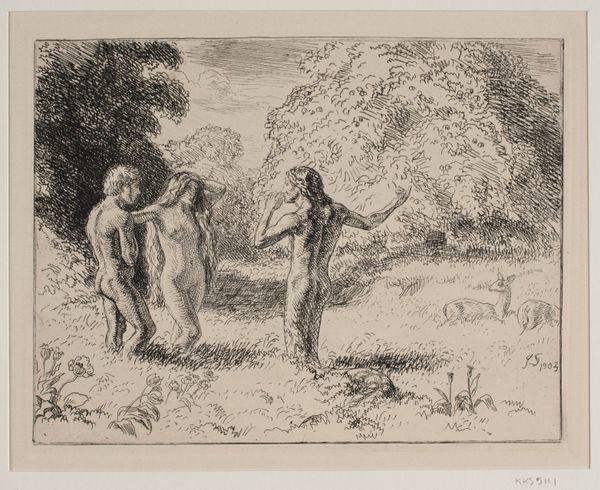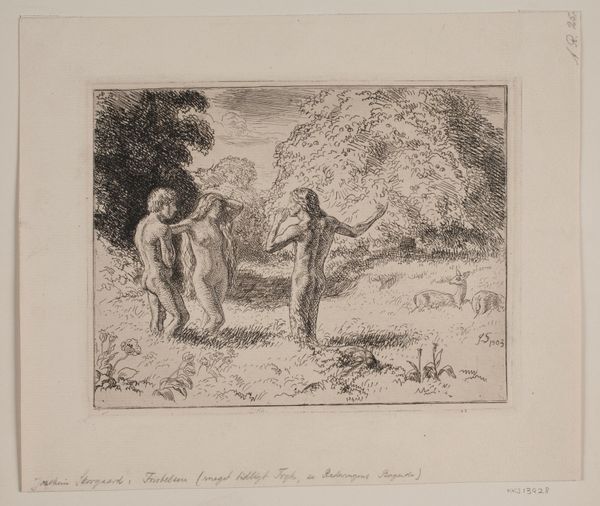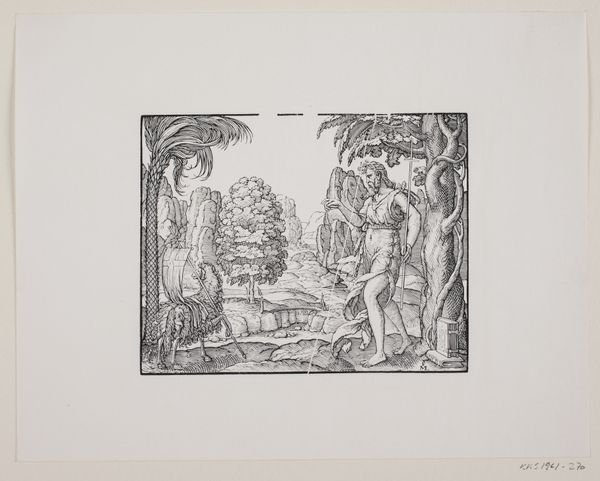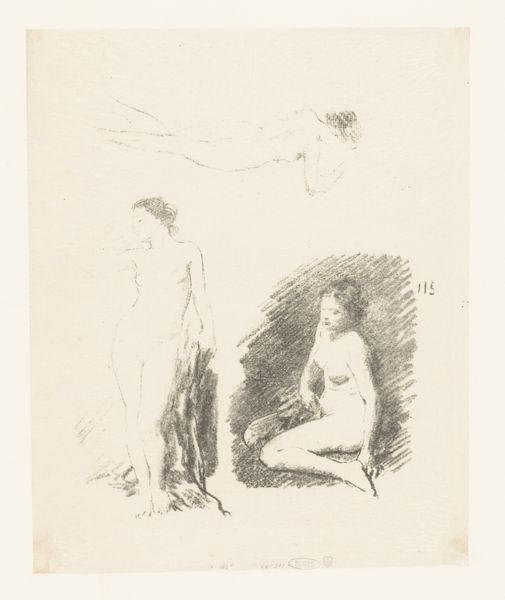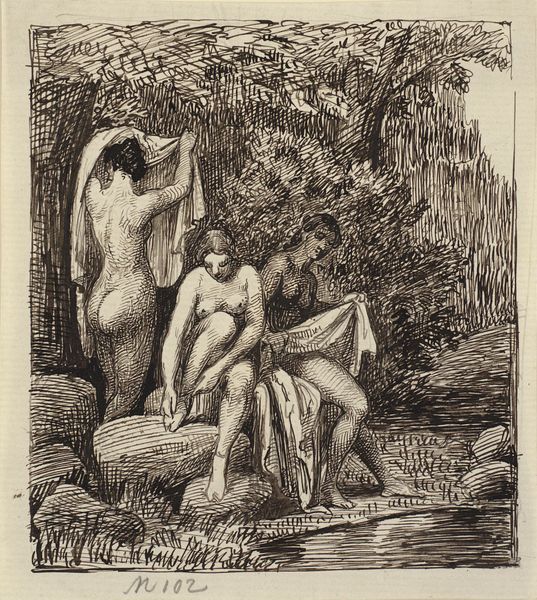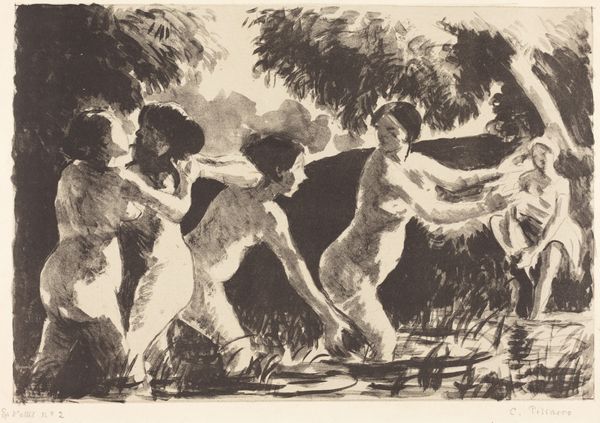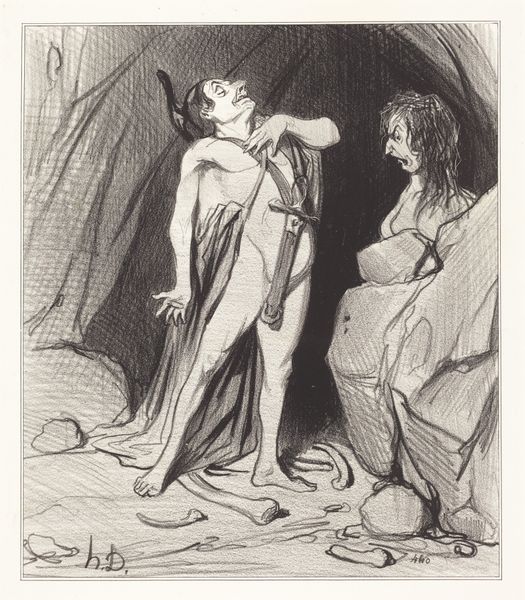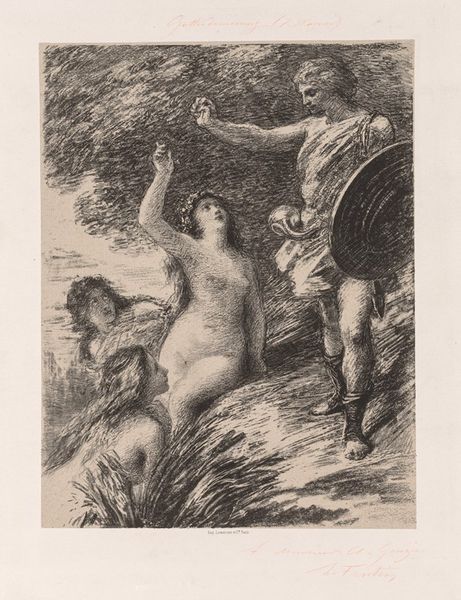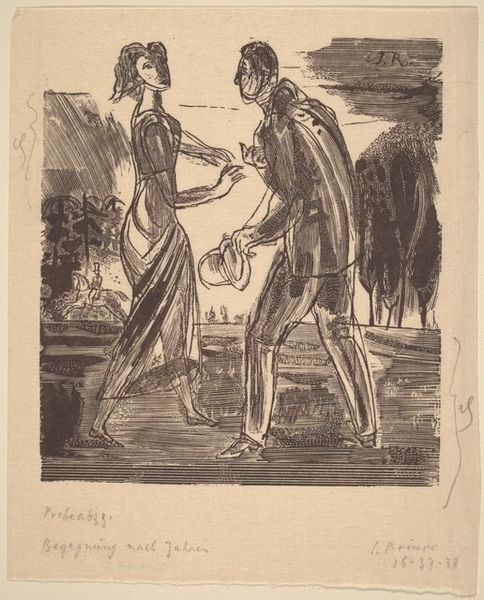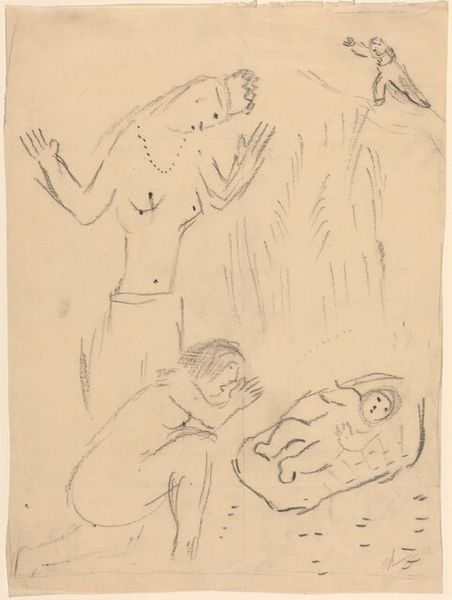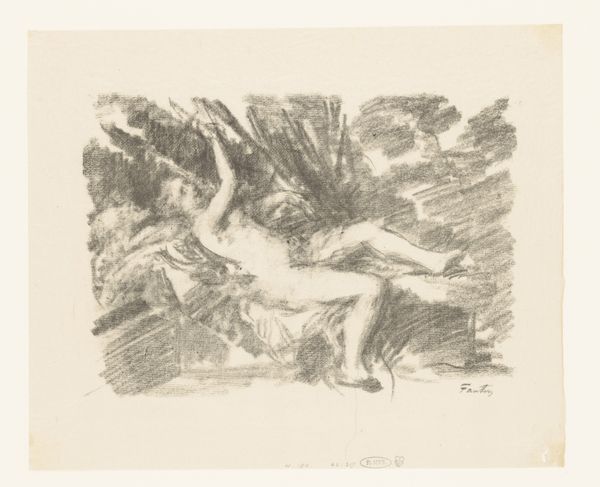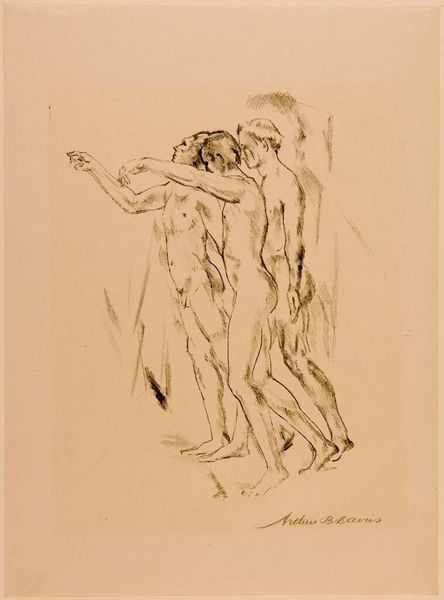
drawing, ink, pencil, pen
#
drawing
#
ink drawing
#
allegory
#
narrative-art
#
pen sketch
#
pencil sketch
#
landscape
#
figuration
#
ink
#
pencil
#
sketchbook drawing
#
pen
#
nude
#
modernism
Dimensions: 155 mm (height) x 202 mm (width) (bladmaal)
Curator: At first glance, this delicate pen and ink drawing exudes a certain melancholy. There's a stillness despite the implied narrative tension. Editor: We're looking at Joakim Skovgaard’s "Adam and Eve Tempted by the Serpent", dating from 1903, currently held at the SMK – Statens Museum for Kunst. Skovgaard, of course, emerged as a key figure in Danish art around the turn of the century. Curator: The application of the ink really stands out. Look at how he renders the serpent’s scaly lower body and then contrasts it with the soft hatching defining Adam and Eve. You see the labor in the lines themselves. Editor: Absolutely, and in considering the historical context, this sketch can be examined as a study for larger paintings on religious themes. These subjects had strong currency at the time and played a significant role in both defining and contesting notions of public morality. Museums showcased them and influenced their interpretation. Curator: I am fascinated by the serpent’s ambiguous form. His upper body is humanoid and the lower portion is a series of painstakingly crafted scales. It almost looks like some fantastical handmade costume, highlighting artifice, process. Editor: The serpent, a key player in a narrative disseminated via religious institutions for centuries, it holds immense socio-political weight. Skovgaard invites viewers to confront themes of choice, morality, and obedience within this symbolic framework. The reception of such imagery depended on prevalent norms, of course. Curator: It’s a rather subdued interpretation though. The tonal range is narrow and it's intriguing how the focus seems more on the figures’ physical forms and less on the overtly dramatic exchange. It makes the narrative almost secondary to the act of depicting the body. Editor: Perhaps, or the power of suggestion over direct portrayal? What's omitted can speak volumes when a story is deeply ingrained within a culture. Ultimately, examining works like this illuminates how artistic vision intersects with established historical narratives. Curator: Precisely. I see a testament to craft meeting complex socio-political history in the rendering, a kind of meditation made material. Editor: And for me, a compelling reminder that art is invariably entangled with the social currents within which it surfaces, as is the act of viewing.
Comments
No comments
Be the first to comment and join the conversation on the ultimate creative platform.
